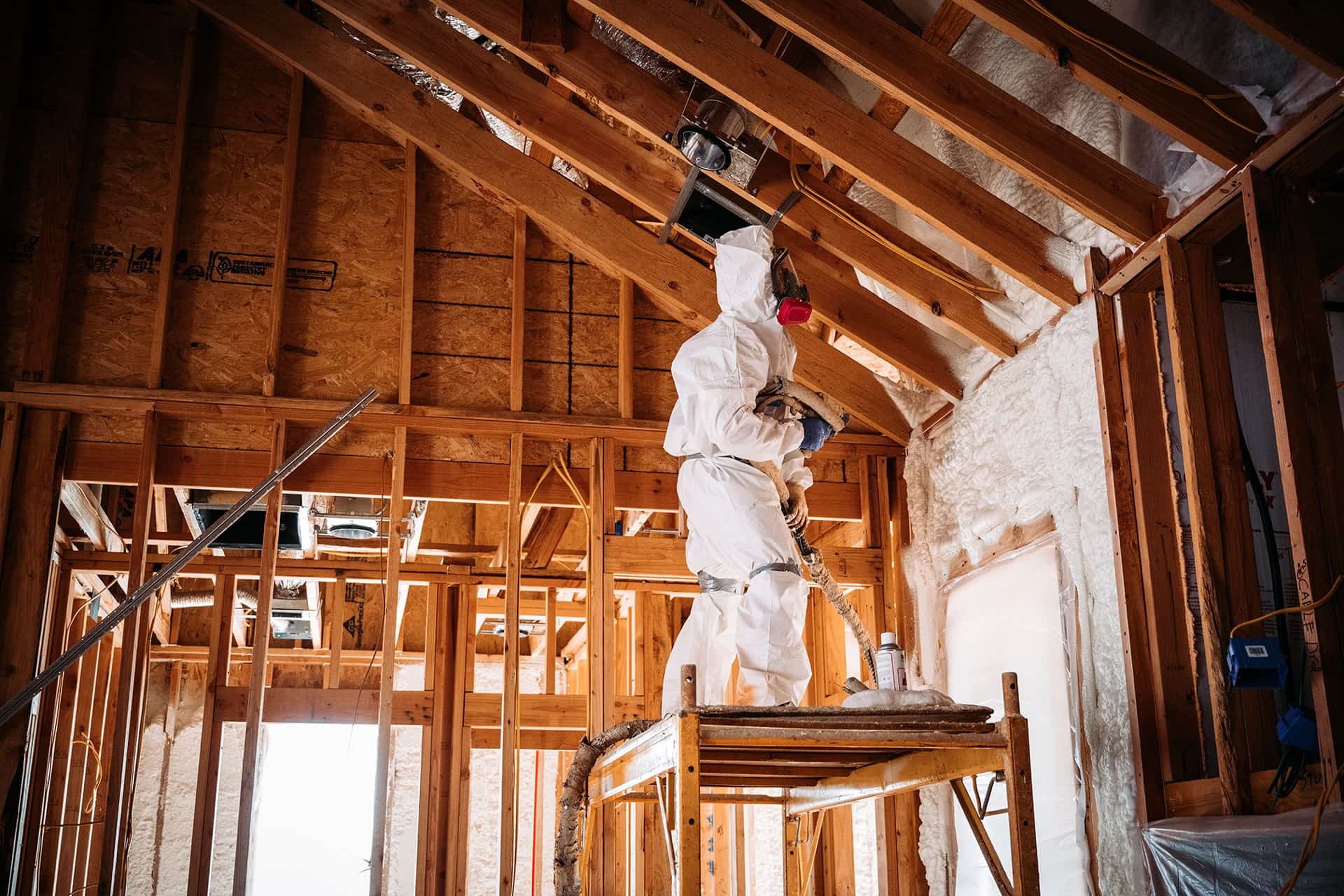
- Investigate the impact of spray foam insulation on roof shingles.
- Understand the concept of unvented attics and their benefits.
- Learn how proper insulation can prevent ice dams.
Spray foam insulation is a popular choice for insulating a home due to its exceptional energy efficiency and air-sealing properties. However, questions persist about whether it can damage roof shingles, particularly when used in certain setups. Could spray foam act as a heat source and contribute to shingle deterioration? Let’s break down the facts and dispel common myths about spray foam insulation, including where not to use spray foam insulation and how it can be applied safely in an unvented attic to prevent ice dams.
Does Spray Foam Really Damage Roof Shingles?
Spray foam insulation is frequently applied to the underside of the roof deck, creating an air-sealed barrier that prevents energy loss and helps regulate indoor temperatures. Concerns often arise that by creating a barrier, the foam may trap heat, turning the roof into a heat source and potentially damaging the shingles above.
Studies and practical applications reveal that this concern is largely unfounded. While spray foam can lead to a slight increase in roof temperature (about 2–5 degrees Fahrenheit), this increase is minimal and within the tolerance range for modern roofing materials. Factors like shingle color, roof pitch, and local climate have a more significant effect on shingle temperature than insulation materials.
Many homeowners fear that this slight temperature rise could void their shingle warranty. While this was an issue in the past, most major manufacturers now accommodate spray foam insulation in their warranty terms, provided the installation meets code requirements. Always verify your warranty details before proceeding with spray foam insulation.
The Role of an Unvented Attic
A major benefit of spray foam insulation is its ability to create an unvented attic, a design in which the insulation is applied directly to the roof deck rather than on the attic floor. This seals the attic from external air and makes it part of the home’s conditioned space.
An unvented attic offers several advantages:
- Improved Energy Efficiency: By eliminating leaks and drafts, an unvented attic reduces heating and cooling costs.
- Enhanced Indoor Comfort: Consistent temperatures throughout the house are easier to maintain, even during extreme weather.
- Moisture Management: Sealing the attic minimizes the risk of condensation and mold growth.
- Preventing Ice Dams: Proper insulation in an unvented attic helps maintain a consistent roof surface temperature, reducing the risk of snow melting unevenly and refreezing at the edges to form damaging ice dams.
Unvented attics have become increasingly popular, especially in areas where energy efficiency is a priority. However, their design must follow building codes to ensure long-term safety and performance.
Where Not to Use Spray Foam Insulation
While spray foam offers exceptional benefits, it’s not ideal for every application. Knowing exactly where not to use spray foam insulation is key to avoiding potential complications:
- Over Moisture-Prone Surfaces: Spray foam can trap existing moisture in walls or ceilings, leading to mold growth and structural issues. Be sure the area is completely dry before application.
- Areas Requiring Frequent Access: In spaces where future maintenance or upgrades to wiring or plumbing are anticipated, the rigidity of spray foam can make it challenging to make modifications. Use alternative insulation in these areas.
- Improper Roof Assemblies in High-Humidity Climates: In humid regions, unvented roof assemblies that use spray foam may require additional vapor barriers to manage moisture effectively and avoid condensation.
Consulting with a professional before installation can help identify these problem areas and recommend the best approach to insulation for your home.
How Spray Foam Insulation Affects Roof Temperature
The idea that spray foam insulation could turn the roof into a heat source stems from its air-sealing properties. Insulating the underside of the roof deck eliminates the need for attic ventilation to manage temperature. Instead, it becomes a conditioned part of the home, with its temperature controlled by the same systems that heat or cool your living areas.
This design reduces temperature fluctuations in the attic and across the roof deck. While this slight temperature adjustment can theoretically impact the lifespan of shingles, the effect is negligible. Modern shingles are designed to endure various environmental stresses, including higher temperatures caused by natural sunlight.
Prevent Ice Dams with Proper Insulation
Ice dams form when snow on the roof melts unevenly, typically due to heat escaping through the attic and warming specific areas of the roof. The melted snow drips down the roof and becomes icy at the colder edges, creating a barrier of ice that traps water. This can lead to leaks, structural damage, and costly repairs.
Spray foam insulation can prevent ice dams by keeping attic temperatures consistent and preventing warm air from escaping through the roof. By applying foam insulation to the roof deck, you eliminate hot and cold zones on the roof, ensuring snow melts evenly. This not only protects your roof but also prevents interior damage caused by water infiltration.
Spray foam insulation does not damage roof shingles when applied correctly. Concerns about it acting as a heat source or contributing to shingle wear are largely outdated, as modern materials and techniques ensure compatibility. Creating an unvented attic with spray foam enhances energy efficiency and can help prevent ice dams, making it a valuable option for homeowners. However, understanding where not to use spray foam insulation is essential to avoid moisture and accessibility issues.
For expert guidance on choosing the right insulation for your roof, contact us at Jack C Wilson. Our team has the experience and knowledge to ensure your home stays protected and energy-efficient for years to come.

